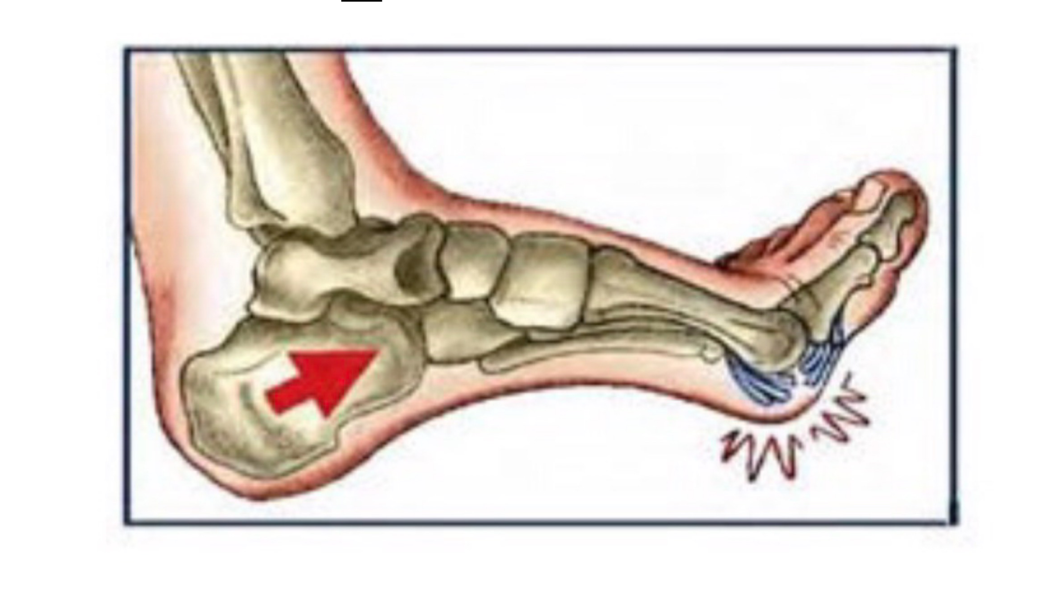
The Achilles tendon is one of the largest tendon of the body. It connects the calf muscle to the heel bone. It can become inflamed, usually due to repetitive strain and poor range of motion. Achilles tendon is commonly treated using orthotics with heel lifts and physical therapy.

Commonly seen in people engaged in running, soccer, baseball and basketball. The person feels pain in back and inner aspect of leg. Common causes are training errors with a change in intensity, duration and frequency, poor foot wear, hyperpronated foot and muscle imbalance. Appropriate foot wear, cross training, NSAIDS and appropriate training helps.

Arthritis can be of different origins but presents it self as damage to the cartilage and articulating surfaces of joints. There are many joints in the foot and ankle and all can be susceptible to arthritis. Rigid footwear and the use of proper orthotics or braces to help immobilize the joints can reduce symptoms related to arthritis.

Mortons neuroma results in nerve related pain that can present itself as numbness, burning, tingling and shooting pain in the forefoot. A Mortons neuroma is a fibrous mass that has built up as the result of a nerve that has been impinged.

Posterior tibial tendon is a long tendon that comes down along inside of the leg and wraps around the back of the ankle bone terminating underneath the foot. It can become strained and inflamed. This is most commonly seen in those with excessively flat feet and can be very painful.

Hallux Valgus, more commonly known as a bunion deformity is a bony malformation of the big toe joint. It can become painful along that joint line due to subsequent arthritis and can also pose problems when trying to find comfortable fitting footwear.

It is one of the most common cause of heel pain which occurs due inflammation of attachment of plantar fascia to the heel bone. The plantar fascia is a sheet like tissue that connects your heel bone to your toes. It supports the arch of your foot. If you strain your plantar fascia, it gets weak, swollen, and irritated (inflamed). Then your heel or the bottom of your foot hurts when you stand or walk.

This condition occurs to those who play contact sports on rigid surfaces like artificial turf. The injury occurs when something or someone falls on back of the calf and hyperextension of great toe occurs spraining the plantar capsule or ligament. Immobilization of great toe area and taking care of inflammation is the key to treatment.

Diabetic neuropathy is a loss in sensation of the feet. When a patient has decreased sensation, the foot is at high risk to complicated injuries and requires extra care. It is important to check feet regularly for any abnormality. This can be difficult for some and we recommend using a mirror on the ground to check the feet daily for irritations and lesions.

Corns and calluses can be quite painful. Seeing a healthcare professional to remove painful corns and calluses safely is crucial, however be sure to speak to someone about orthotics and footwear to ensure that these limiting skin irritations do not return.

Hammer, claw and mallet toes display as varying contracture combinations of the small joints in the toes. These deformities can make shoe fitting a nuisance and can lead to painful corns and callouses.

Pes planus, latin for flat feet, can lead to a variety of limiting conditions. Excessive flattening of the foot puts a lot of strain on not only the soft tissue of the feet and ankles, but also can contribute to painful joints higher up the chain, such as knees, hips and lower back.

Metatarsalgia is a catch-all phrase for pain in the forefoot and can be the result of many underlining issues. Most are treated with a proper orthotics and footwear. Forefoot pain is often exaggerated while walking barefoot or on hard surfaces in those suffering with metatarsalgia.

High arch foot, also called as Pes Cavus, is a condition wherein the inner arch of the sole of foot is higher than normal. Mostly, this is a part of a systemic neurological condition like Polio or Charcot Marie Tooth Disease, otherwise it can also be a sequale of past foot trauma. It causes the loss of cushioning effect of foot to the body while walking and can lead to foot, ankle, knee and hip pain. Patients present with pain, callus and corn at the base of great or second toe. Clawing of toes and ulcer due to extreme bony pressure over forefoot are also seen. People with high arch should wear Cushioning sports shoes. Surgical corrections for the symptoms and complications are also available.

These conditions are those which we all go through at least once in our lifetime while being engaged in recreational or athletic sports activity . Inadequate footwear, unconditioned muscles and faulty habits can predispose to the trauma. Immediate and adequate first aid, splinting and pain killers are the first thing to do.
